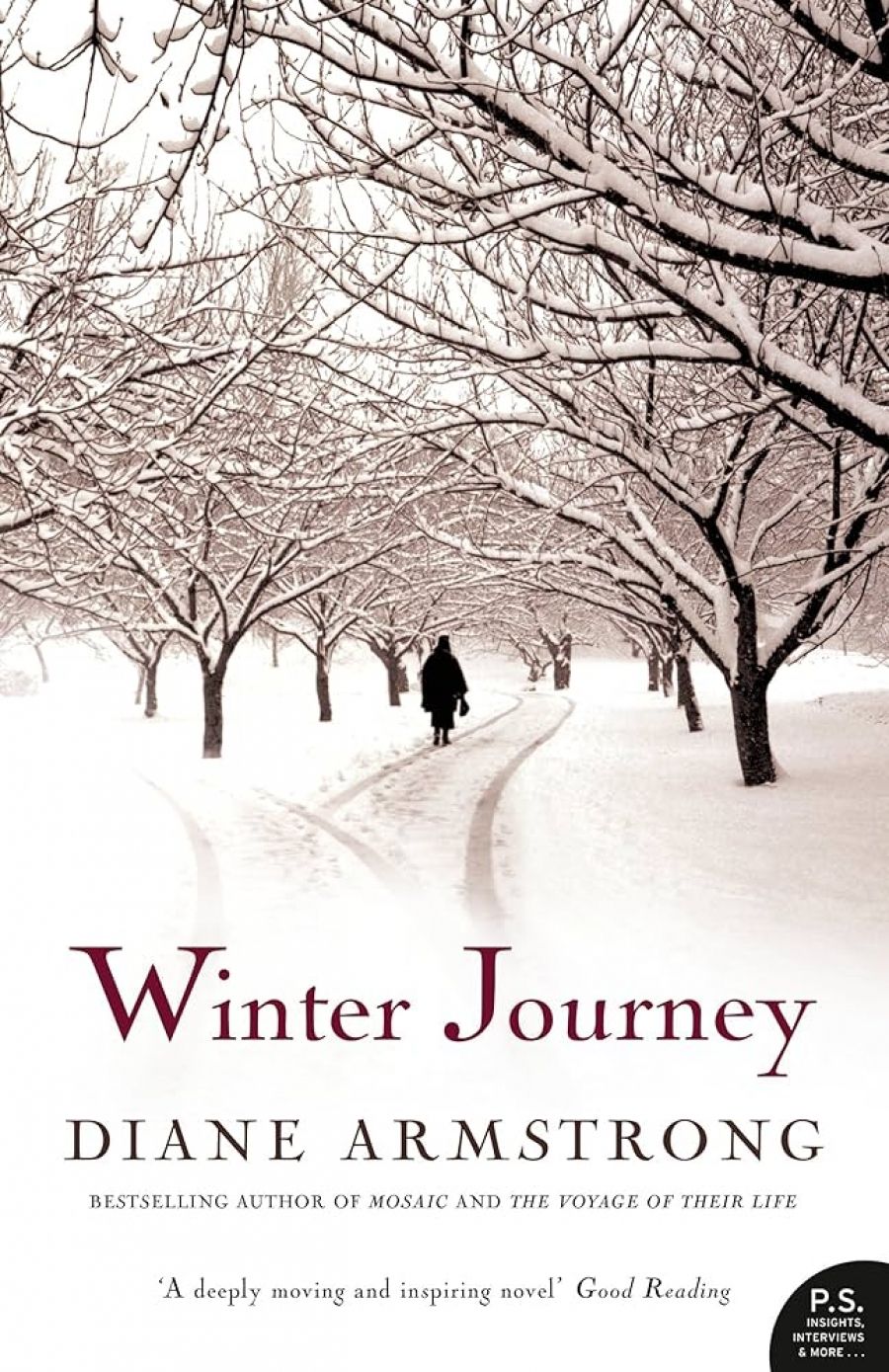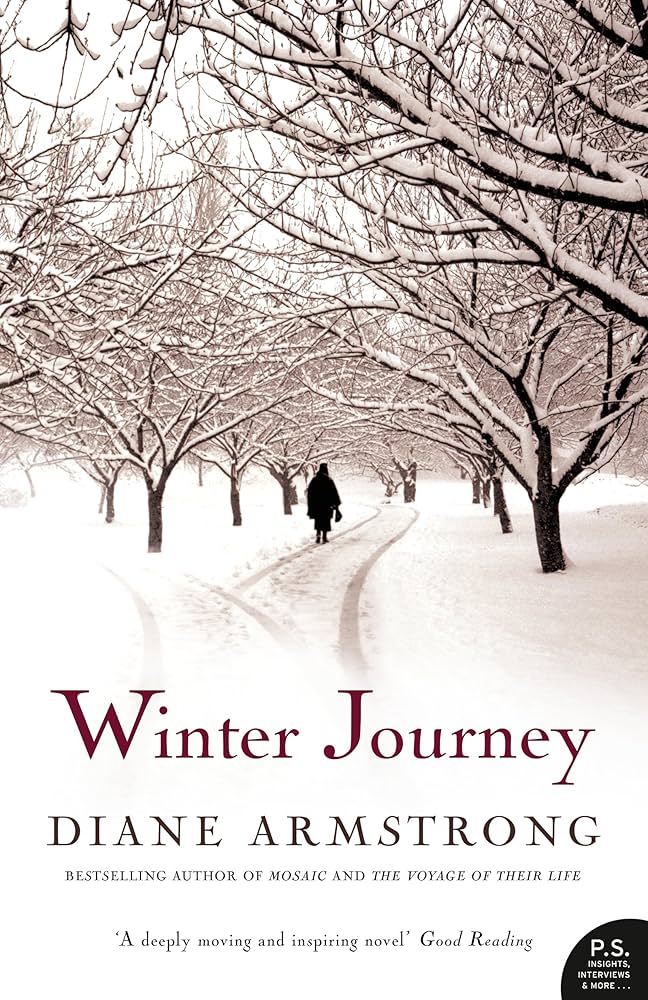
- Free Article: No
- Contents Category: Fiction
- Review Article: Yes
- Article Title: Tilting towards the Op-Ed
- Online Only: No
- Custom Highlight Text:
Diane Armstrong should have stuck to the facts. The many surprising particulars that illuminated her two fine histories of the Jewish refugee experience (Mosaic: A Chronicle of Five Generations, 1998, and The Voyage of Their Life, 1999) have been replaced, in her first novel, by clichés and banalities that turn to soap opera her account of an Australian forensic scientist unearthing the secrets of her own past.
- Book 1 Title: Winter Journey
- Book 1 Biblio: Fourth Estate, $29.95 pb, 432 pp
- Book 1 Cover Small (400 x 600):

- Book 1 Cover (800 x 1200):

Winter Journey is that problematic creature, a popular fiction about the Holocaust – not a topic that comfortably fits popular fiction’s needs for clarity and closure. Armstrong clearly sees her story as a vehicle for educating readers about genocide, and she sets the bar quite low, including many bite-size details that assume the reader knows almost nothing of the atrocities of World War II. This gives the book the feel of a young adult novel set for class discussion.
The story revolves around a Polish–Australian forensic dentist, Halina, a well-preserved woman who must be in her late fifties. Halina returns to Poland to take part in the excavation of a mass grave on the edge of the wake-in-fright fictional village of Kalwaria (not the real pilgrimage destination of the same name, near Kracow). She hasn’t been to Poland since she migrated with her mother in the 1940s. Now she finds a country where anti-Semitism and Catholic nationalism threaten the country’s plans to join the European Union.
The novel tilts uneasily between homilies on the nature of evil and creaky sub-plots about romance and personal development. Armstrong never trusts readers to draw their own conclusions – there’s always a character to lead the lesson. ‘Halina, we are all made from warped timber,’ says the local schoolteacher, after a post-coital discussion on the duty of remembrance. ‘Love is the only thing that makes the beauty of our grain shine through.’ And just in case we don’t connect the personal and the political, Armstrong explains: ‘All she knew was that she was a forensic dentist with crooked front teeth who devoted her life to finding out the identity of strangers, yet had no idea who she was herself.’
Halina – and the reader – don’t arrive in Poland until Chapter Ten. There are one hundred pages of warm-up set in Sydney, where Halina conducts an affair with a newspaper editor, grieves for the death of the mother she never understood, and takes us on a whistle-stop tour of forensics: the autopsy room, the dental records, the reconstruction software and the court case, during which Halina’s evidence can’t stop a smarmy lawyer and a callous judge from bamboozling the jury into acquitting a perverted child killer.
Elsewhere, one of Halina’s colleagues at the lab looks up from her computer screen and says, ‘I wish we had this technology in Cambodia after Pol Pot’, before launching into a page of condensed Killing Fields memories. I’m not sure why a tertiary-educated scientist is made to say, ‘Sometimes we so hungry, we eat insects and leaves’, and other broken English telegrams. Throw in Halina’s three jolly girlfriends and a scene where the heroine rescues a child from the surf, and it all feels like a merger between the television programmes Blue Heelers and Halifax f.p.
The weight of Winter Journey’s big themes sits uncomfortably with the hackneyed plot devices that Armstrong uses to keep the story moving: surprise siblings, secret affairs, and convenient confessions. She is always deadly earnest about her topic – not that it ever calls for flippancy – but, in her eagerness to impart her lessons, she overlooks her duty as a novelist to write a well-crafted book with credible characters and prose that doesn’t tilt towards the Op-Ed page with every second paragraph.
There is an interesting idea struggling to get past the homilies and revelations. Armstrong writes best – and plainest – when she describes the work of the forensic team and what they can deduce from the way bones fracture, bleach, and crumble over the years. Her descriptions of the welded bone mass of those burned alive in a barn is more effective than any of the scenes in which people express horror. The careful work of the scientists gluing their macabre puzzles together would provide enough suspense, but instead we get villagers who show up at key moments with italicised flashbacks that explain all. Fictionalised Holocaust stories, even if cribbed directly from real testimony, will never have the heft of the real memories, which refuse to adhere to life-affirming lessons about the human spirit.


Comments powered by CComment